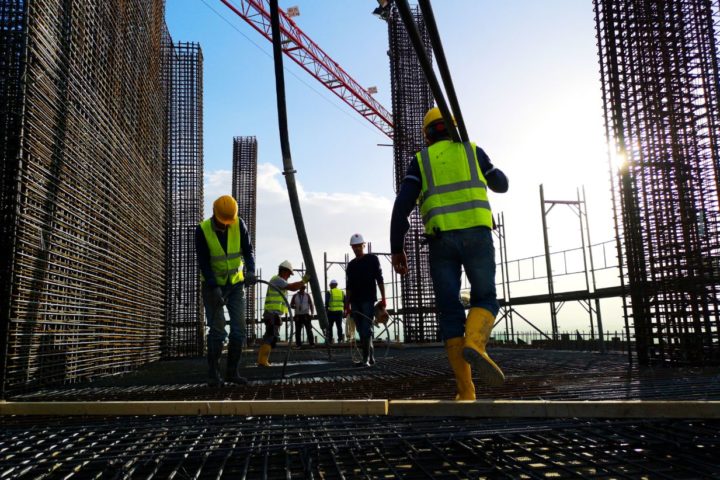Radiation levels have soared in seawater near Japan's crippled Fukushima Daiichi nuclear plant, officials said on Saturday, as engineers struggled to stabilise the power station two weeks after it was hit by a massive earthquake and tsunami.
Tests on Friday showed iodine 131 levels in seawater 30 km from the coastal nuclear complex had spiked 1,250 times higher than normal, but it was not considered a threat to marine life or food safety, the Nuclear and Industrial Safety Agency said.
“Ocean currents will disperse radiation particles and so it will be very diluted by the time it gets consumed by fish and seaweed,” said Hidehiko Nishiyama, a senior agency official.
Despite that reassurance, the disclosure may well heighten international concern over Japanese seafood exports. Several countries have already banned milk and produce from areas around the Fukushima Daiichi plant, while others have been monitoring Japanese seafood.
The prolonged efforts to prevent a catastrophic meltdown at the plant have also intensified concern around the world about nuclear power. U.N. Secretary-General Ban Ki-moon said it was time to reassess the international atomic safety regime.
Engineers were trying to pump radioactive water out of the power plant 240 km north of Tokyo, after it was found in buildings housing three of the six reactors. On Thursday, three workers sustained burns at reactor No. 3 after being exposed to radiation levels 10,000 times higher than usually found in a reactor.
The crisis at the nuclear plant has overshadowed a big relief and recovery effort from the magnitude 9.0 quake and the huge tsunami it triggered on March 11 that left more than 27,500 people dead or missing in northeast Japan.
Plant operator Tokyo Electric Power Co said it was using fresh water instead of seawater to cool down at least some of the reactors after concern arose that salt deposits might hamper the cooling process.
Two of the plant's reactors are now seen as safe but the other four are volatile, occasionally emitting steam and smoke. However, the nuclear safety agency said on Saturday that temperature and pressure in all reactors had stabilised.
Prime Minister Naoto Kan said on Friday the situation at Fukushima was “nowhere near” being resolved. His chief cabinet secretary said the following day that at least it was not deteriorating.
“We are preventing the situation from worsening — we've restored power and pumped in fresh water — and making basic steps towards improvement but there is still no room for complacency,” Yukio Edano told a news briefing on Saturday.
More than 700 engineers have been working in shifts to stabilise the plant with no end in sight.
At Three Mile Island, the worst nuclear power accident in the United States, workers took just four days to stabilise the reactor, which suffered a partial meltdown. No one was injured and there was no radiation release above the legal limit.
At Chernobyl in Ukraine, the worst nuclear accident in the world, it took weeks to “stabilise” what remained of the plant and months to clean up radioactive materials and cover the site with a concrete and steel sarcophagus.
So far, no significant levels of radiation have been detected beyond the vicinity of the plant in Fukushima.
The U.S. Department of Energy said on its website no significant quantities of radiological material had been deposited in the area around the plant since March 19, according to tests on Friday.
In Tokyo, a metropolis of 13 mln people, a Reuters reading on Saturday morning showed ambient radiation of 0.22 microsieverts per hour, about six times normal for the city. That was well within the global average of naturally occurring background radiation of 0.17-0.39 microsieverts per hour, a range given by the World Nuclear Association.
The Japanese government has prodded tens of thousands of people living in a 20 km-30 km zone beyond the stricken complex to leave. Edano said the residents should move because it was difficult to get supplies to the area, and not because of elevated radiation.
Kazuo Suzuki, 56, who has moved from his house near the nuclear plant to an evacuation centre, said neighbours he had talked to by telephone said delivery trucks were not going to the exclusion zone because of radiation worries.
“So goods are running out, meaning people have to drive to the next town to buy things. But there is a fuel shortage there too, so they have to wait in long queues for gasoline to use the car.”
Radiation levels at the evacuation centre were within a normal range of about 0.16 microsievert, according to a Reuters geiger counter reading.
In Japan's northeast, more than a quarter of a million people remain in shelters, and the impact on livelihoods is becoming clearer. The quake and tsunami not only wiped out homes and businesses but also a fishing industry that was the lifeblood of coastal communities.
“Fishermen lost their gear, ships and just about everything. About half will probably get out of the business,” said Yuko Sasaki, a fishmonger in the tsunami-hit city of Kamaishi.
The double disaster probably destroyed aqua farms for abalone, sea urchins, oysters, scallops and seaweed that authorities say account for 80% of the revenue of the region's fisheries.
The tsunami obliterated centuries-old fishing ports along the northeast coast, sending ships adrift in the Pacific Ocean, to the bottom of the sea, or depositing them on land, where they now lie among the splintered remains of homes.
What Are Cookies
As is common practice with almost all professional websites, our site uses cookies, which are tiny files that are downloaded to your device, to improve your experience.
This document describes what information they gather, how we use it and why we sometimes need to store these cookies. We will also share how you can prevent these cookies from being stored however this may downgrade or ‘break’ certain elements of the sites functionality.
How We Use Cookies
We use cookies for a variety of reasons detailed below. Unfortunately, in most cases there are no industry standard options for disabling cookies without completely disabling the functionality and features they add to the site. It is recommended that you leave on all cookies if you are not sure whether you need them or not, in case they are used to provide a service that you use.
The types of cookies used on this website can be classified into one of three categories:
- Strictly Necessary Cookies. These are essential in order to enable you to use certain features of the website, such as submitting forms on the website.
- Functionality Cookies.These are used to allow the website to remember choices you make (such as your language) and provide enhanced features to improve your web experience.
- Analytical / Navigation Cookies. These cookies enable the site to function correctly and are used to gather information about how visitors use the site. This information is used to compile reports and help us to improve the site. Cookies gather information in anonymous form, including the number of visitors to the site, where visitors came from and the pages they viewed.
Disabling Cookies
You can prevent the setting of cookies by adjusting the settings on your browser (see your browser’s “Help” option on how to do this). Be aware that disabling cookies may affect the functionality of this and many other websites that you visit. Therefore, it is recommended that you do not disable cookies.
Third Party Cookies
In some special cases we also use cookies provided by trusted third parties. Our site uses [Google Analytics] which is one of the most widespread and trusted analytics solutions on the web for helping us to understand how you use the site and ways that we can improve your experience. These cookies may track things such as how long you spend on the site and the pages that you visit so that we can continue to produce engaging content. For more information on Google Analytics cookies, see the official Google Analytics page.
Google Analytics
Google Analytics is Google’s analytics tool that helps our website to understand how visitors engage with their properties. It may use a set of cookies to collect information and report website usage statistics without personally identifying individual visitors to Google. The main cookie used by Google Analytics is the ‘__ga’ cookie.
In addition to reporting website usage statistics, Google Analytics can also be used, together with some of the advertising cookies, to help show more relevant ads on Google properties (like Google Search) and across the web and to measure interactions with the ads Google shows.
Learn more about Analytics cookies and privacy information.
Use of IP Addresses. An IP address is a numeric code that identifies your device on the Internet. We might use your IP address and browser type to help analyze usage patterns and diagnose problems on this website and to improve the service we offer to you. But without additional information your IP address does not identify you as an individual.
Your Choice. When you accessed this website, our cookies were sent to your web browser and stored on your device. By using our website, you agree to the use of cookies and similar technologies.
More Information
Hopefully the above information has clarified things for you. As it was previously mentioned, if you are not sure whether you want to allow the cookies or not, it is usually safer to leave cookies enabled in case it interacts with one of the features you use on our site. However, if you are still looking for more information, then feel free to contact us via email at [email protected]







